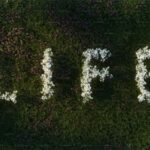As part of my engagement in a six-week discussion series on Noticing or Seeing Whiteness, I’m having an incredible opportunity to hone my knowledge and skills about our racial, political, and cultural divides. The experience is strengthening my humility, courage, and stamina to continue my journey to contribute to the undoing of racism. This week’s discussion was focused on disrupting the status quo and facing what Dr. Robin DiAngelo in White Fragility calls the “Good/Bad Binary.”
Dr. DiAngelo describes how our denial about our past transgressions of direct racist acts or collusion with policies and systems that sustain racism allows white people to see racism only in terms of racist acts. Our heads are full of images of white Southerners attacking Black people or images of Black people being killed by whites. We tell ourselves that these are racist acts by bad people. We remind ourselves that we believe everyone is equal therefore we must be “good” people and not racist.
This “Good/Bad Binary” is the dominant paradigm through which we have understood racism in this country: as discreet, intentional, and malicious acts of racial hatred and violence. This allows most of us white people to distance ourselves from understanding our own racism and the ways we are complicit with racism. In avoiding this discomfort, we rob ourselves of the opportunity to grow and to learn how to disrupt racism.
Dr. DiAngelo makes this point bluntly through a summary of descriptors of racist=bad (Ignorant, Bigoted, Prejudiced, Mean-spirited, Old, Southern) and Not Racist =Good (Progressive, Educated, Open-minded, Well-intentioned, Young and Northern) (p. 72). She follows this summary with a powerful quote from an African American scholar and filmmaker Omowale Akintunde: “Racism is a systematic, societal, institutional, omnipresent, and epistemologically embedded phenomenon that pervades every vestige of reality. For most whites, however, racism is like murder: the concept exists, but someone has to commit it for it to happen. This limited view of such a multilayered syndrome cultivates the sinister nature of racism and, in fact, perpetuates racist phenomena rather than eradicates them.”[1]
What is the alternative to this trap of tying racism to acts by individuals? It is acknowledging that racism is embedded in our culture and policies. Hence, we all are part of racism. As white people, we have choices about how we notice our own thoughts and actions based on white superiority and work to advance anti-racist policies and more real equity. When we release the “Good/Bad Binary”, we create grace for ourselves, and space to make different choices.
A recent example for me was attending a workshop in our town in a City-owned rec center in a neighborhood occupied predominantly by People of Color. The upkeep of the facility was way below buildings in other parts of town. I felt angry, sad, and scared about what to do. Prior to attending this discussion on noticing whiteness, I would not have thought about the many implications of both what I was observing and what was mine to do about it. I decided to consult leaders in that neighborhood and get their perspectives.
Both in our views about racism and about our political and cultural divides, both/and thinking for me requires humility, courage and stamina. First, the good/bad paradigm leads to arrogance and causes us to attack our political opponents as “bad” or “less than”.
A friend sent me this week a short writing by a Catholic nun who directs a homeless shelter and soup kitchen in Erie, PA. When asked what wisdom guided her, she said it was the simple belief that every person is inherently good. Humility brings me to a similar conclusion – we are all one among many and both beautiful and flawed. While it is much easier to see your flaws and my beauty, humility invites me to turn the mirror to say “Yep, I’ve done things that reinforce inequality among races. I am an imperfect person like everyone else.”
It takes courage to pay attention to my own behaviors and thoughts – to see and notice – and then to intentionally choose to change. Courage is required to pause, to take a breath, to connect to our higher or better selves or intuition/spirit and ask what is going on here? What is the loving thing to do?
Because our white culture is the dominant culture and we try to hold on to our power and “in charge” status, it takes a lot of stamina to stay attentive to letting go of the “good-bad binary” about racism and to change our own behaviors and the systems and organizations that perpetuate racism. For more information on seeing whiteness for anti-racist actions, go to:
https://docs.google.com/document/d/15s2kQxfWHrHk_5tO2ylSiIy6WmSmpeAaXYRXOSqd3zw/edit?usp=sharing
[1] DiAngelo, Robin, White Fragility. Beacon Press, Boston Massachusetts, 2018, p. 72.




Tom,
I like this. WE should send it out to everyone in our racial conversations before the December meeting as one of the talking points. tuck
Thanks Tuck, glad you liked it. Let’s talk it over when we talk with Joe on 10th. Tom
I like what your Erie friend says about our inherent goodness. Jon Meachem writes that A. Lincoln was a sinner who did saintly things. I can do more saintly things if I realize that Every one is capable of that same journey. Thx for the reminder!
Thanks Sally, yes we never rise above human and we are all graced.
Tom